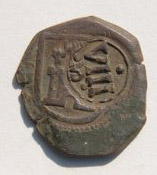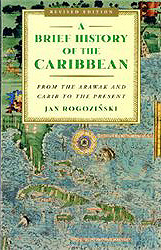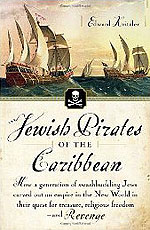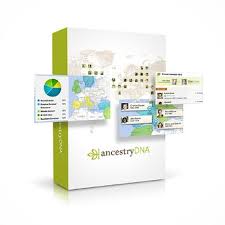Caribbean

Caribbean Ports: ° Anguilla ° Antigua and Barbuda ° Antilles ° Aruba ° Bahamas ° Barbados ° Cuba ° Dominica ° Dominican Republic (Santo Domingo) ° Grenadines ° Guadeloupe ° Haiti ° Jamaica ° Martinique ° Netherlands/Antilles ° Puerto Rico ° Saint Kitts ° St. Lucia ° St. Martin ° St. Thomas ° St. Vincent and the Grenadines ° Tortola ° Trinidad and Tobago ° Turks and Caicos
The Bahamas
During most of the 18th century the islands of the Bahamas, lying astride Spanish sailing routes from the Caribbean, were contested by the British and Spanish -- a matter unresolved until the Treaty of Versailles in 1783. In this pact, England gained uncontested rights to the Bahamas while ceding the peninsula of Florida to Spain.
Then, with the arrival in the Bahamas of the British loyalists from colonial America beginning in 1783, this immigration ushered in a new era. The American Revolution had ended, and as a result of the British defeat, many colonists who had remained loyal to the British Crown were in serious trouble. Convicted of treason, their property confiscated, and ostracized by their neighbors they were forced to leave the former colonies, (including Florida recently ceded to Spain). In an effort to aid these loyal, unfortunate subjects, the British government offered some financial compensation and extensive land grants in the virtually empty Bahamas.
Since most were from the Carolinas, Georgia and Florida, cotton culture was at the core of their hopes for the future. England was hungry for cotton, paying high prices and the mills in Manchester were operating at capacity to meet the demand, offering the Loyalists an opportunity to recoup the losses suffered in the American colonies. From the mid 1780's until the turn of the century, the island flourished. With a few exceptions the entire island was divided into Loyalist land grants, most of which were cleared by the slash-and-burn technique, and field after field was devoted to the growing of cotton. These new landowners came to the island with slaves brought from the southern colonies since slave labor was a necessity if the cotton economy was to flourish. Additional slaves were imported from West Africa and there was a small slave market at the Bowe's Tavern.
Some choose to live at Nassau, but many maintained an active interest in the affairs of the island, serving as Commissioners of Roads, on a committee to build a church, as representatives to the General assembly, etc. The record of these times includes names such as John Kelsall, Jacob Winfree, Charles Dames, Thomas Forbes, John Mowbray, Walter Brown, Nathaniel Hall, Nicholas Almgreen, William Clarke, Martin Jollie, Benjamin Morley and John Stewart.
The desire to grow cotton failed as the island consisted of a thin layer of topsoil covering coral sand or the coral base of the island. The land was overplanted and by 1802 hopes of a cotton-based economy were dashed.
When Great Britain began restricting the slave trade, the abolition of slavery continued to rise. By 1838 all slaves were freed. Even though the land was depleted, by purchse, grant, gift, inheritance or squatting, most of the land gradually became to be owned by the former slaves and their descendants.
January 1, 1855, The Daily Globe, Washington, District of Columbia
(Correspondence of the New York Tribune.)
The Bahamas
Nassau, N.P., Monday, November 20, 1854
Thinking that a brief account of the present condition of the Bahama Islands might prove interest... I have collected as much information as my brief stay here would allow. The appearance of Nassau, as seen from the entrance to the harbor, is highly picturesque: built on a hill of great elevation, nearly every house is visible, while the beautiful foliage of cocoanut and orange trees, interspersed through its avenues, and swelling in the background to goves and woods, fragram with tropical fruits, all join to make it one of the most beautiful tropical sites for a city....
The forts were built in 1742, under the supervision of John Tinker, the Colonia Governor . . . The wealth of the islands consists primarily in salt ponds, admitted naturally and artifically; secondly, in fruit; thirdly, in sponge and turtle for export. What the Spanish were in search of was gold, which they partially found in St. Domingo . . .
The population of Nassau in 1852 was males 3,819, females 4,340, total 8,159. The present Governor was appointed in October 1854 and expresses a great desire for a more intimate commercial intercourse with the United States. The United States mail steamer Jewess, which arrived her eon teh 21st October, was the first mail steamer that visited the island, and the only mails for the States are conveyed via St. Thomas, which renders communication with us inconvenient. The Government have a standing offer of 1,000 to the first mail steamer from the Unites States via Havana. The exports from the Bahamas in 1853 were principally of salt, sponge, tortoise shell and fruit. With more facilities for commerce, the amount (as stated by John F. Bacon, Esq., United States Counsul at Nassau) could easily be doubled.
October 25, 1879, Daily Free Press, Eau Claire, Wisconsin
Telegraphic News
OCEAN'S PERILS.
Burning of a Spanish Vessel off the Bahamas
Seventeen Men Rescused -- Thirty-Three Men Probably Lost.
PICKING UP SURVIVORS.
New Orleans, Oct. 23. The steamer Louisa II, from Algiers, Africa, arrived and the captain reports that on the night of the 18th he picked up, in the Bahamas channel, 17 survivors of the burned steamer Nuevo Pojaro Del Oceano, including Capt. Diaz and two mates. The steamer had 42 persons, the crew and about 20 passengers aboard when the calamity occurred. The rescued are in a terrible state of exhaustion, having been clinging to the floating debris for 18 hours.
Capt. Voss reports that about 9 o'clock, on the evening of llie 18th, while passing through the Bahamas channel, he heard a hail coming up apparently from the sea, and stopping the engines, he lowered a boat and picked up five men who were clinging to a frail raft.
On learning from the rescued the nature of the disaster that had occurred, he cruised in the vicinity until far in the forenoon of the 19th, and succeeded in picking up in all seventeen men.
From Capt. Diaz, of the Pajaro, the following particulars were obtained: The steamer left Havana on October I6th, for Neuevitas, with a general cargo, including a large lot of grain, provisions and ammunition for the Spanish army. Everything was all right until about 4 o'clock Saturday morning, October 18th, when the vessel was in Bahama straits, between Paredon and Lobas lights, an alarm of fire was sounded.
When the captain, passengers and crew, who were in bed at the time, aroused to ascertain the cause of the alarm it was found that the vessel had taken fire amidship, and was then in a sheet of flames. General confusion ensued, some of the
passengers and crew running to the stern of the vessel and jumping overboard in their night clothes, with whatever small objects they could lay their hands on to serve as life buoys, while others were trying to lower the boats.
The vessel burnt to the water's edge and sank in less than four hours: There were on board 42 of the crew and some 1 or 20 passengers, including six officers and soldiers of the Spanish army . . . Those who were picked up were in a fearful state from their long exposure to the sun and water. Their flesh was torn and chafed from contact with the rough boards to which they clung . . . Doubtless many were eaten by sharks, for the second mate and his companion who were floating with a plank to support them saw a shark approaching and managed, by climbing on top, to avoid him for a moment when he turned and went away.
The Pajaro, owned by Herrera of Havana, was formerly an American vessel, known as theNiagara, and run between New York and Havana. The Captain and men speak in highest terms of the officers of the Louise H. for the manner in which they were treated. Englishmen furnished clothes for the naked and attended to those who were hurt. Thirty three of the passengers and crew are still missing.
Spanish Pirate Coins
Selections from Ferdinand and Isabella, Colonial Caribbean, King Philip III of Spain, Elizabeth II, Ferdinand IV, King of Castile, and Leon Pepion...



















 Copyright ~ 1998-2018.
Copyright ~ 1998-2018. 